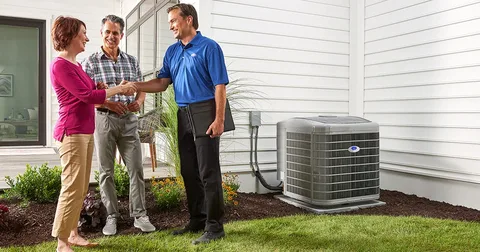Keeping your home comfortable is more than just adjusting the temperature. Smart HVAC upgrades can improve air quality, enhance comfort, and help you save on energy bills. If your heating or cooling system is outdated or inefficient, smart upgrades can improve how your system works.
Seven smart HVAC upgrades that make a real difference include air purifiers for cleaner air and smart thermostats for easy control. Moreover, zoning should be considered to adjust temperatures in different areas, and ductless systems for more flexibility. Humidity control is needed to stay comfortable year-round, upgraded AC units are needed for better performance, and air ionizers are needed to reduce germs and allergens. These upgrades can make your home more energy-efficient, healthier, and comfortable. To find out which upgrades are right for your home or to get assistance with installation, you should consult experienced HVAC Contractors.
7 Smart HVAC Upgrades To Improve Your Home
Upgrading your HVAC system doesn’t mean starting from scratch. A few smart improvements can bring big benefits. Let’s look at the most useful ones.
1. Whole-Home Air Purification
Air purifiers can be added to your existing HVAC system. These systems clean the air throughout your home, removing dust, pollen, mold spores, and pet dander. This is especially helpful for people with allergies or asthma. Whole-home systems are more effective than small, portable purifiers and work automatically whenever your HVAC runs.
2. Smart Thermostats
Smart thermostats help you control your heating and cooling from your phone or tablet. They learn your habits and adjust automatically to save energy. You can schedule temperature changes or let the thermostat do the work. Many models notify you when it’s time to change filters or service your HVAC system. Installing a smart thermostat is one of the easiest and most cost-effective upgrades for better comfort and energy savings.
3. Zoning
Zoning divides your home into different areas that can be heated or cooled separately. Each zone has its thermostat. This means no more fighting over the temperature or wasting energy on rooms you’re not using. Zoning works well for homes with multiple floors, large layouts, or rooms that are consistently warmer or cooler than the rest of the house. It gives you smart control over your home’s comfort.
4. Ductless Systems
Ductless HVAC systems, also called mini-splits, are great for rooms without ductwork or where it’s hard to add ducts. They work well in garages, additions, or upstairs rooms that don’t cool properly. Each unit can be controlled separately, so you only use energy in the spaces you’re actively using. They are quiet, efficient, and don’t require major changes to your home.
5. Humidity Control Systems
Keeping the right humidity level in the home makes a big difference in comfort. Too much humidity feels sticky and can lead to mold. Too little causes dry skin and makes it harder to stay warm in the winter. Adding a humidifier or dehumidifier to your HVAC system helps keep your home comfortable all year. Balanced humidity also helps your HVAC system run more efficiently.
6. Upgrade Your AC Unit
If your air conditioner is over 10–15 years old, it might be time for an upgrade. New units are much more energy-efficient and reliable. Today’s models use less electricity and provide more efficient cooling. Look for units with high SEER ratings (Seasonal Energy Efficiency Ratio). A newer system also makes less noise and can lower your monthly energy bills.
7. Air Ionizers
Air ionizers are another smart add-on to your HVAC system. These devices release charged particles (ions) that attach to dust, bacteria, and other harmful airborne contaminants. This makes them easier to filter out. Some ionizers even help remove odors. They are especially beneficial for homes with pets, smokers, or allergy sufferers.
How Much Is A Smart HVAC System?
Knowing the costs is important when considering upgrading a smart HVAC system. Smart thermostats, one of the most popular and cost-effective upgrades, typically range in price from $200 to $500. These thermostats offer great control and can help optimize your home’s energy use for cost savings.
If you want to go further with a complete smart HVAC system, including sensors, controllers, and upgraded components, the price can range from $5,000 to $10,000, depending on your home’s size, system complexity, and features. The exact cost depends on the brand, system size, features, and the complexity of installation.
Conclusion
Making your home more comfortable doesn’t always mean a full HVAC replacement. Smart upgrades like air purifiers, smart thermostats, zoning, ductless systems, humidity control, upgraded AC units, and air ionizers can greatly improve your home’s air quality, comfort, and energy use. These upgrades are simple, effective, and compatible with most existing systems. If you’re unsure where to begin or which upgrades are best for your home, it’s always wise to ask experienced HVAC contractors for the right advice and installation.









